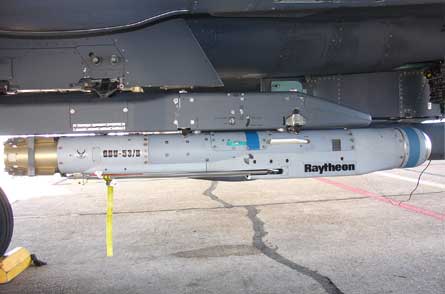Raytheon has cleared the GBU-53/B small diameter bomb (SDB) increment II to enter the most critical phase of flight testing.
The US government has yet to make a decision about export policy for the GBU-53/B. However, Raytheon has also started talking to potential international customers about the capabilities of the 113kg (250lb)-class bomb, which is designed to strike moving targets obscured by rain or fog beyond 40nm (74km).
Both events show the programme is moving slightly ahead of schedule more than a year after Raytheon claimed the engineering and manufacturing development (EMD) contract, defeating a rival bid led by SDB Increment I supplier Boeing.
"Fifteen months on from the EMD contract, I'd be happy to be on schedule at this point," said Tom White, Raytheon SDB II programme director. "The fact that we're a few weeks early overall, it makes me pretty happy."
White said the programme has completed the "tower test" on the software that integrates the two most advanced modes in the SDB II seeker - the imaging infrared camera and millimetre wave radar.
In tower testing, the two sensors are installed on an elevated platform and scan for moving targets. Software algorithms allow a target tracked by the infrared sensor, which can see through rain, to be handed over to the radar, which can see through fog. If the sensor can hand-off the track between modes, the weapon can function in any weather.

Credit: Raytheon
"This is the last test before we go to flight test," White said.
The flight test phase will come in two parts. First, the SDB II will be mounted on a helicopter, which will simulate the trajectory of a released bomb. The next step will be to mount the SDB II on a Boeing F-15E.
The flight tests of the software that hand-off the target tracks between the imaging and radar modes is the most risky part of the programme. The SDB II sensor also includes a semi-active laser, but that mode will be tested later.
"Semi-active lasers are something we've been doing for quite a while," White said.
The US Air Force and US Navy plan to buy thousands of GBU-53/Bs, starting with integration on the F-15E and Lockheed Martin F-35.
Related Links:
- Stephen Trimble's The DEW Line brings you the latest defence talking points
- Sign up for free to our defence e-newsletter to get the latest news sent directly to your inbox
Source: Flight International













